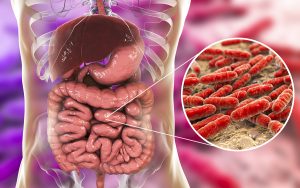Vitamin D deficiency caused rickets in the past, but now we know that vitamin D is the definitive link for other health problems. The lack of it is the reason for numerous illnesses. A search in my website gives you more than 170 blogs where I am discussing the effect of vitamin D. These describe how vitamin D is the definitive link in a lot of different diseases. In a 2015 study from Brazil the authors noted that a critical vitamin D blood level was 12 ng/mL. All these critically ill patients received treatment in an ICU setting. In vitamin D blood levels of 12 ng/mL the mortality rate was 32.2%. A control group of ICU patients with more than 12 ng/mL had a mortality rate of only 13.2%. The authors concluded that a low vitamin D level on ICU admission was an independent risk factor for mortality in this critically ill patient group.
A few diseases where low vitamin D is the definitive link for a poor outcome
In patients, who have arthritis, cardiovascular disease, breast cancer, diabetes, osteoporosis, influenza and others, the laboratory tests that shows their 25-hydroxy vitamin D level, are usually below 15 ng/mL. This link has 269 peer reviewed references.
A 2015 Italian study showed that microvascular complications in diabetes patients were high, if the vitamin D3 blood levels were low. If patients had high levels of vitamin D, there were no complications such as retinopathy or nephropathy. But if levels were below 20 ng/mL, damages were significant in the capillaries of the eyes and kidneys.
Multiple sclerosis
It has been known for some time that in the northern hemisphere MS is more common because of the lack of sunshine, which in turn leads to less vitamin D3 production in the skin. Multiple sclerosis (MS) is an autoimmune disease where immune cells attack the lining of nerves. Both nerve cells and immune cells have vitamin D receptors. It appears that vitamin D calms down immune cells and remission of an MS relapse is more likely.
Dr. Fitzgerald and colleagues published a study in JAMA Neurology in 2015. Results of this study showed marked differences between MS patients with high and low vitamin D levels.
Multiple sclerosis rates with high and low vitamin D levels
Patients with the highest vitamin D blood levels (more than 40 ng/mL) had the lowest rates of new MS lesions. Previous studies found that a low blood level of vitamin D (less than 25 ng/mL) had an association with a higher risk of developing MS. Dr. Fitzgerald’s study showed that a 20 ng/mL (50.0-nmol/L) increase in serum vitamin D levels associated with a 31% lower rate of new MS lesions. Patients with the highest vitamin D level of more than 40 ng/mL (100 nmol/L) had the lowest amount of new MRI lesions (47% less than the patients with the lowest vitamin D levels).
Dementia and Alzheimer’s disease
A 2014 study showed that patients with a low vitamin D level had a connection with a high risk of dementia and Alzheimer’s disease.
Specifically, the researchers found the following observations.
- Vitamin D level of less than 10 ng/mL: 122% increased risk of Alzheimer’s
- A vitamin D level of 10 to 20 ng/mL: 51% increased risk of Alzheimer’s
Vitamin D is the definitive link for the immune system
In a publication of 2006 Dr. John Cannell and co-workers have reviewed why influenza has seasonal outbreaks. They found that the innate immune system was very dependent on vitamin D. Those who did not get enough sunlight in the northern hemisphere during January, February, March and April have an average 25-hydroxy vitamin D level of only 15 to 17 ng/mL. In contrast, from July to September the same volunteers had vitamin D levels of 24 to 29 ng/mL. The authors stressed that this was the reason why spring flus in the late winter/early spring season are common, but disappear in summer.
Vitamin D requirements for immune system is 2000 IU or more per day
Vitamin D is essential for the functioning of the innate and adaptive immune system. They also are the reason why children are not as affected by influenza viruses as adults are. Dr. Cannell said: “The innate immunity of the aged declined over the last 20 years due to medical and governmental warnings to avoid the sun. While the young usually ignore such advice, the elderly often follow it”. Had the older patients taken higher doses of vitamin D3 every day, their immunity would have been as strong as the children’s immunity. The publication cites another paper that found that 2000 IU per day or more will strengthen the immune system. Note that this is a higher dose than treating rickets. Treatment of rickets responds to only 400 IU of vitamin D3 per day.
Mechanism of action of vitamin D in infectious diseases like influenza or Covid-19 coronavirus
Here is evidence from US researchers that states that higher doses of vitamin D3 will mitigate the course of influenza and of Covid-19 coronavirus. The researchers outlined that vitamin D has 3 effects:
- Maintaining tight epithelial junctions making it more difficult for the Covid-19 coronavirus to penetrate them.
- “Killing enveloped viruses through induction of cathelicidin and defensins.” These powerful antiviral polypeptides can kill viruses that have invaded the bloodstream within 1 to 2 days.
- “…And reducing production of proinflammatory cytokines by the innate immune system, thereby reducing the risk of a cytokine storm leading to pneumonia.” People who get viral pneumonia are at a high risk of death. By bringing the vitamin D blood level up to the higher range of normal, between 50 and 80 ng/mL, patients that have encountered Covid-19 coronavirus are more likely to survive.
Criticism of high dose vitamin D treatment
A common criticism of treatment with higher doses of vitamin D is that people would develop high blood calcium levels and would get kidney stones. Three recent studies have demystified this. A 2012 study looked at patients who were in the higher range of calcium levels, but deficient in vitamin D. They were treated with vitamin D3 und closely supervised. The calcium levels did not change after 1 year of high doses of vitamin D.
This 2018 study observed that there is a small amount of kidney stone formers who will form kidney stone with or without vitamin D3 treatment. However, the large majority of patients do not form kidney stones with vitamin D treatment and their blood calcium levels stay the same before and after vitamin D treatment.
Toxic vitamin D blood levels
Toxic levels of vitamin D blood levels are above150 ng/mL, or 375 nmol/L. The therapeutic levels discussed here are well below these toxic levels.
Placebo controlled New Zealand study fails to show kidney stones
A placebo-controlled study from New Zealand went on for 3.3 years. 100,000 IU of vitamin D3 monthly (3333 IU per day on average) in the experimental group were compared to a placebo group. There were no vitamin D induced kidney stones and also no changes in calcium levels.
In past studies regarding vitamin D toxicity were done. But with these investigations there were many confounding factors that led to false results. The investigators at those times mistakenly thought that they were side-effects of vitamin D. Up to this day conventional medicine often warns of hypercalcemia and kidney stones with vitamin D treatment. While the patient is on higher vitamin D levels, the physician can do blood and urine tests to see whether or not there is any concern.
Polypeptides released by vitamin D
There are more than 100 polypeptide hormones that are controlled by vitamin D. The most important ones for control of bacterial and viral infections are the defensin family and the cathelicidin family of polypeptides. They are instrumental in preventing the cytokine storm with a Covid-19 coronavirus infection treated with high vitamin D doses.
Decades after the original description of vitamin D researchers found out that vitamin D actually is a hormone.
There are vitamin D hormone receptors on almost every cell of the body. Vitamin D integrates the body cells and they respond as one unit. It is only recently that researchers found out about the release of polypeptides, particularly defensin and cathelicidin. They are vital in the defence against the Covid-19 Coronavirus and the various flu types.
Conclusion
The detection of vitamin D originally occurred when rickets was examined. But later researchers found that vitamin D has hormone qualities.
You can prevent several diseases, like arthritis, cardiovascular disease, breast cancer, diabetes, osteoporosis and influenza. But you must take adequate amounts of vitamin D to bring the vitamin D blood level up. 25-hydroxy vitamin D blood levels are now recognized as the standard test to measure whether you have enough vitamin D on board. When it comes to fighting infections the vitamin D blood level has to be above 30 ng/mL (above 75 nmol/L). At this level the immune system will release defensin and cathelicidin polypeptides. These are powerful antiviral and antibacterial substances that can even fight Covid-19 coronavirus.
High vitamin D therapy is safe
With careful monitoring of blood vitamin D levels side effects of high vitamin D dosages were not found. Conventional medicine keeps on repeating old studies with confounding errors. This scares people, and as a result they don’t want to take enough vitamin D for prevention. Hypercalcemia and kidney stones were NOT found in randomized newer studies. As long as the vitamin D level does not exceed 50-80 ng/mL (or 125-200 nmol/L) vitamin D therapy is perfectly safe.















